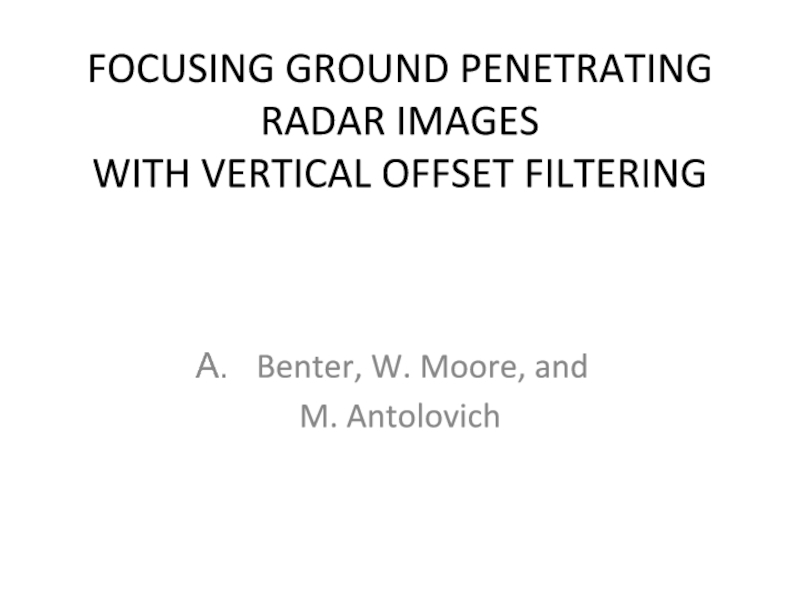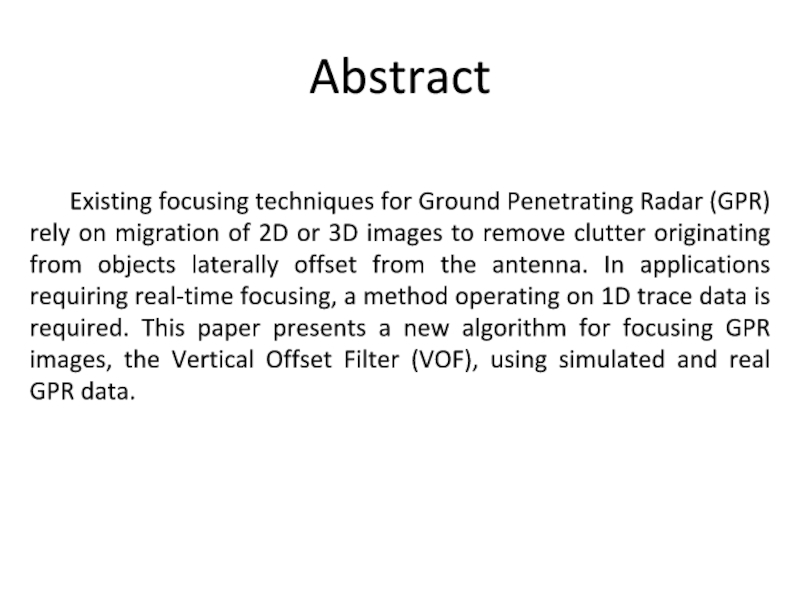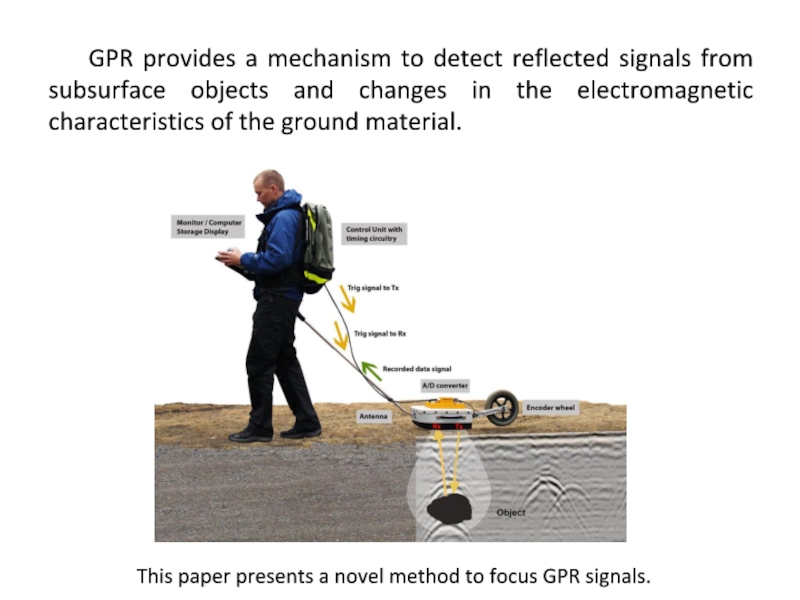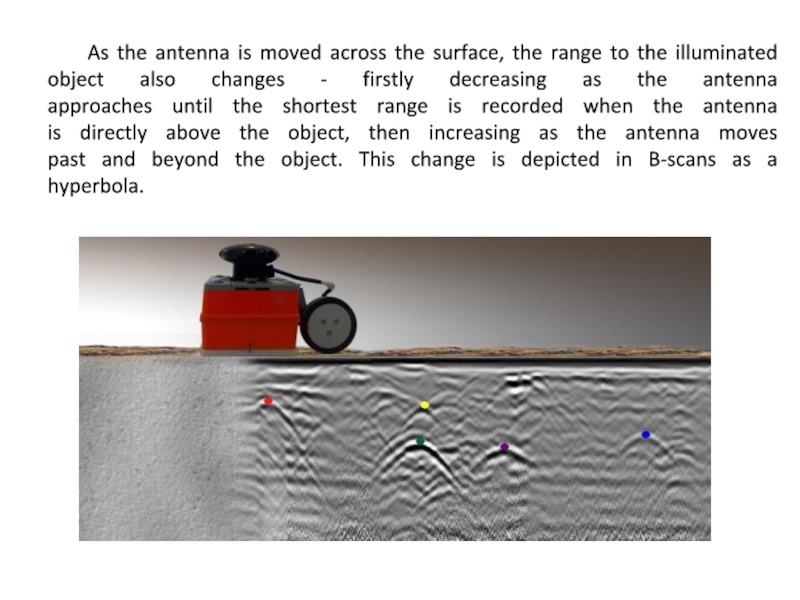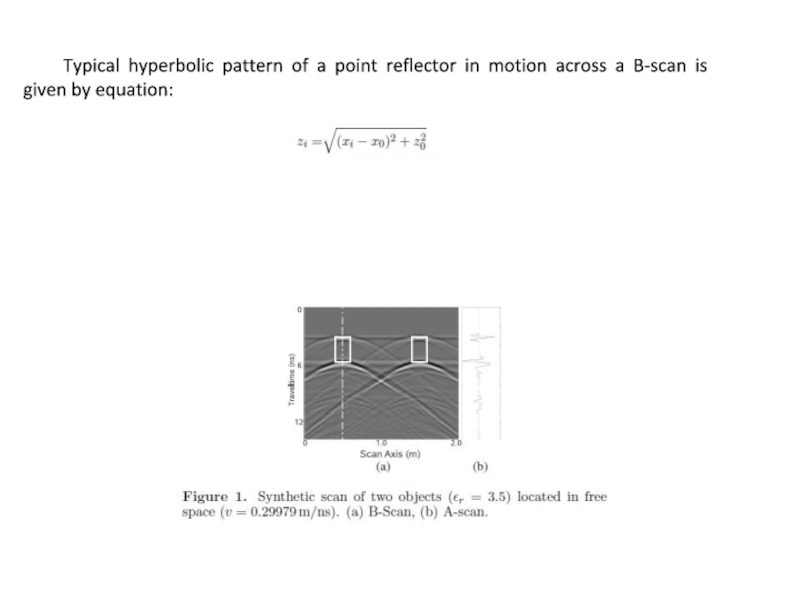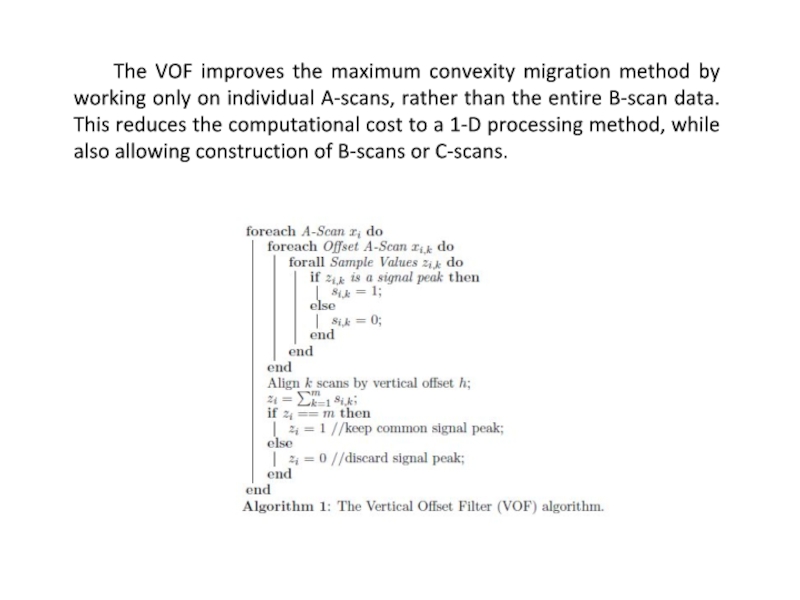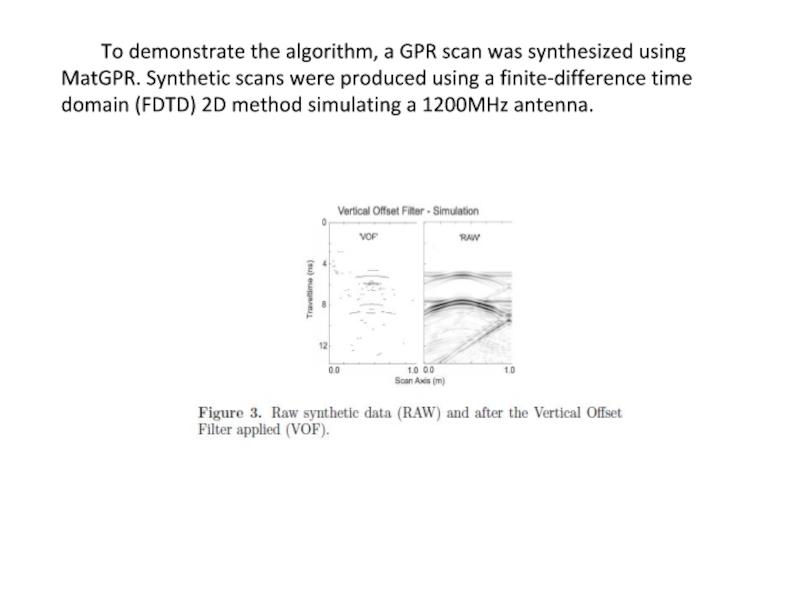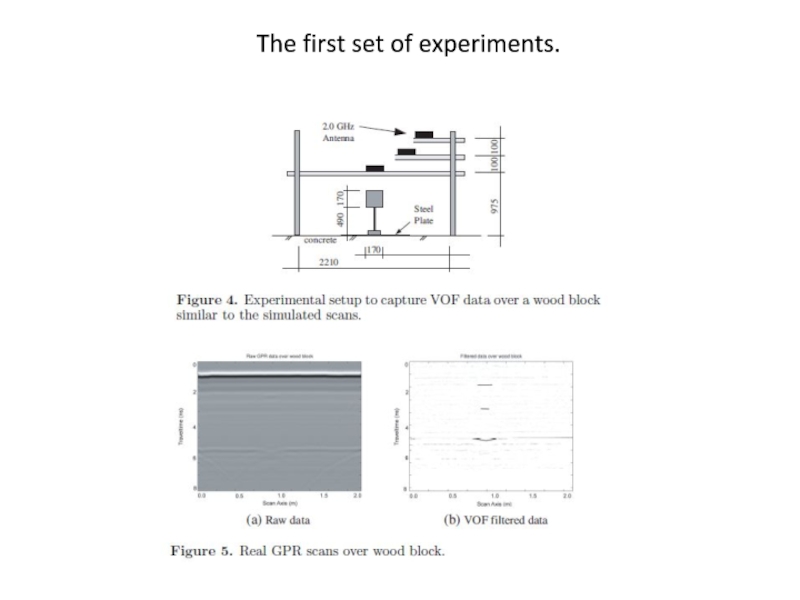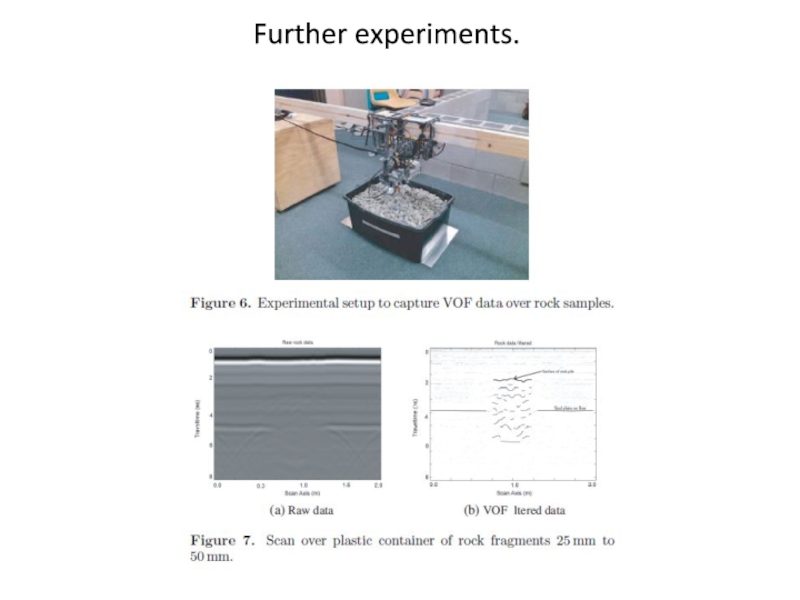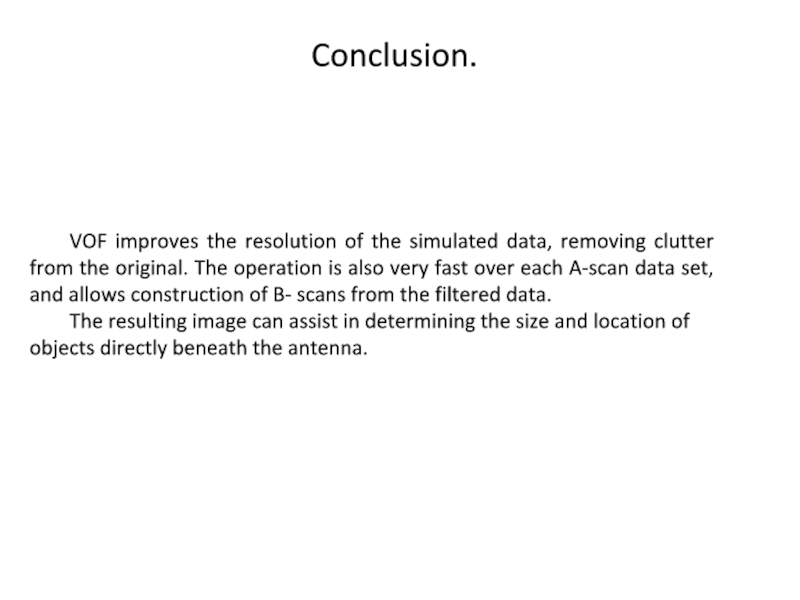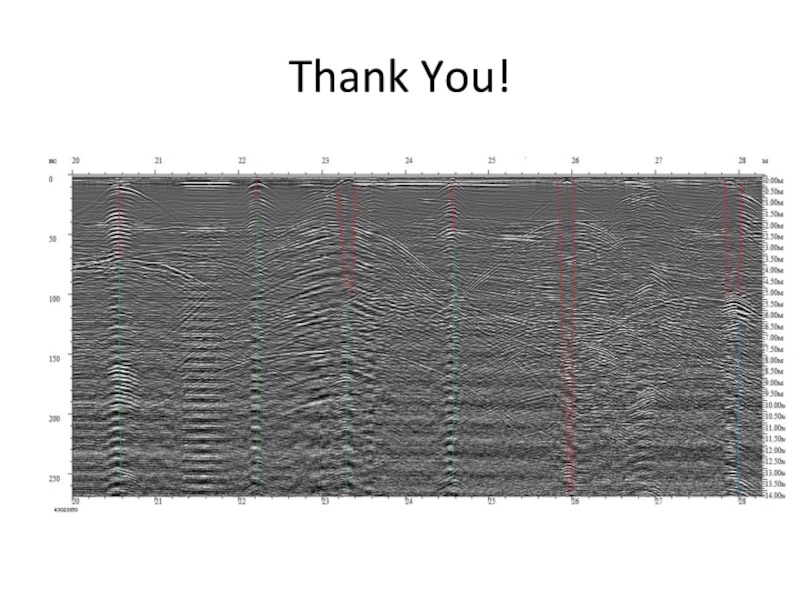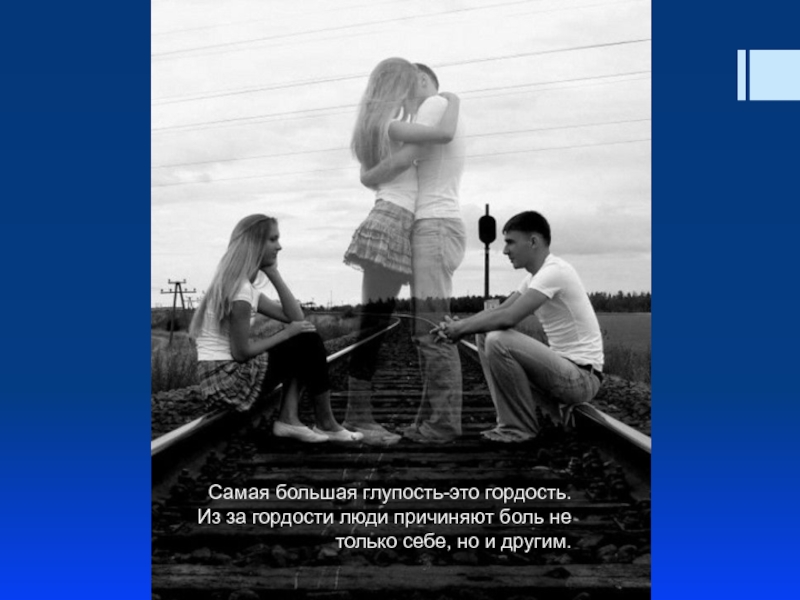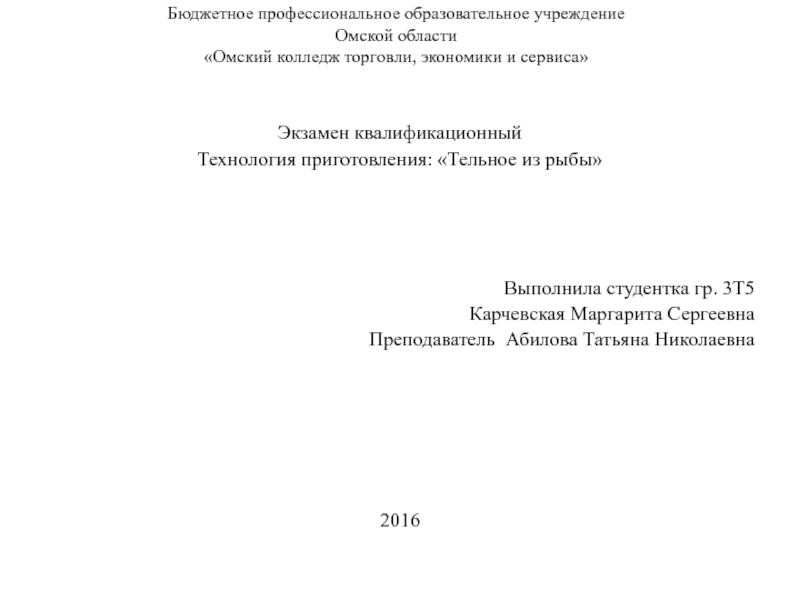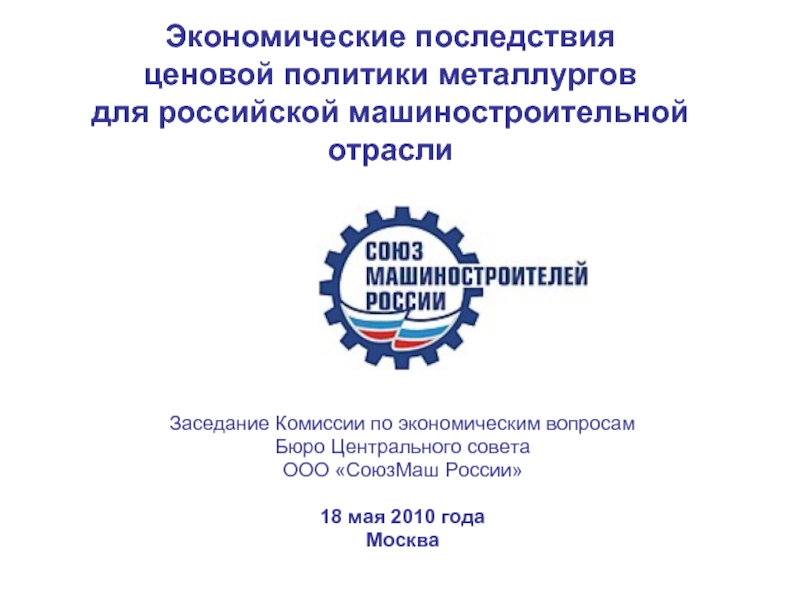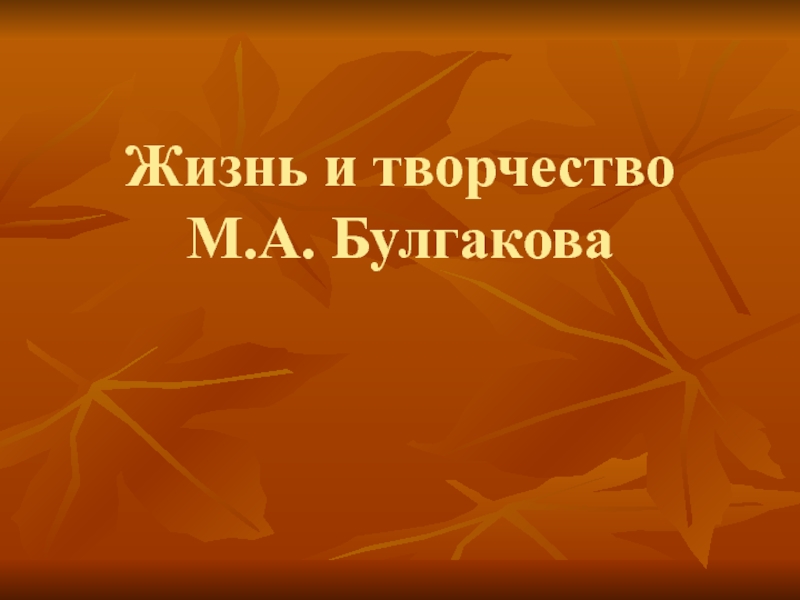- Главная
- Разное
- Дизайн
- Бизнес и предпринимательство
- Аналитика
- Образование
- Развлечения
- Красота и здоровье
- Финансы
- Государство
- Путешествия
- Спорт
- Недвижимость
- Армия
- Графика
- Культурология
- Еда и кулинария
- Лингвистика
- Английский язык
- Астрономия
- Алгебра
- Биология
- География
- Детские презентации
- Информатика
- История
- Литература
- Маркетинг
- Математика
- Медицина
- Менеджмент
- Музыка
- МХК
- Немецкий язык
- ОБЖ
- Обществознание
- Окружающий мир
- Педагогика
- Русский язык
- Технология
- Физика
- Философия
- Химия
- Шаблоны, картинки для презентаций
- Экология
- Экономика
- Юриспруденция
Focusing ground penetrating radar images with vertical offset filtering презентация
Содержание
- 1. Focusing ground penetrating radar images with vertical offset filtering
- 2. Abstract Existing focusing techniques for Ground Penetrating
- 3. GPR provides a mechanism to detect reflected
- 4. As the antenna is moved across the
- 5. Typical hyperbolic pattern of a point reflector
- 6. The VOF improves the maximum convexity migration
- 7. To demonstrate the algorithm, a GPR scan
- 8. The first set of experiments.
- 9. Further experiments.
- 10. VOF improves the resolution of the simulated
- 11. Thank You!
Слайд 1FOCUSING GROUND PENETRATING RADAR IMAGES
WITH VERTICAL OFFSET FILTERING
Benter, W. Moore, and
M. Antolovich
Слайд 2Abstract
Existing focusing techniques for Ground Penetrating Radar (GPR) rely on migration
of 2D or 3D images to remove clutter originating from objects laterally offset from the antenna. In applications requiring real-time focusing, a method operating on 1D trace data is required. This paper presents a new algorithm for focusing GPR images, the Vertical Offset Filter (VOF), using simulated and real GPR data.
Слайд 3 GPR provides a mechanism to detect reflected signals from subsurface objects
and changes in the electromagnetic characteristics of the ground material.
This paper presents a novel method to focus GPR signals.
Слайд 4 As the antenna is moved across the surface, the range to
the illuminated object also changes - firstly decreasing as the antenna
approaches until the shortest range is recorded when the antenna
is directly above the object, then increasing as the antenna moves
past and beyond the object. This change is depicted in B-scans as a
hyperbola.
Слайд 5 Typical hyperbolic pattern of a point reflector in motion across a
B-scan is given by equation:
Слайд 6 The VOF improves the maximum convexity migration method by working only
on individual A-scans, rather than the entire B-scan data. This reduces the computational cost to a 1-D processing method, while also allowing construction of B-scans or C-scans.
Слайд 7 To demonstrate the algorithm, a GPR scan was synthesized using MatGPR.
Synthetic scans were produced using a finite-difference time domain (FDTD) 2D method simulating a 1200MHz antenna.
Слайд 10 VOF improves the resolution of the simulated data, removing clutter from
the original. The operation is also very fast over each A-scan data set, and allows construction of B- scans from the filtered data.
The resulting image can assist in determining the size and location of objects directly beneath the antenna.
The resulting image can assist in determining the size and location of objects directly beneath the antenna.
Conclusion.
